
Click on an image or scroll down for more.





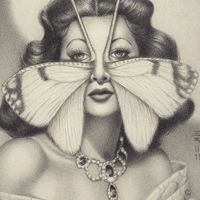
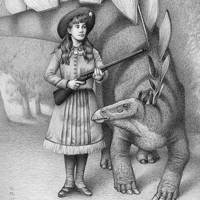
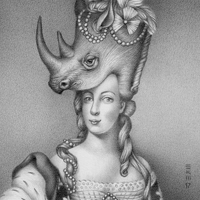






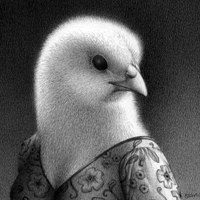



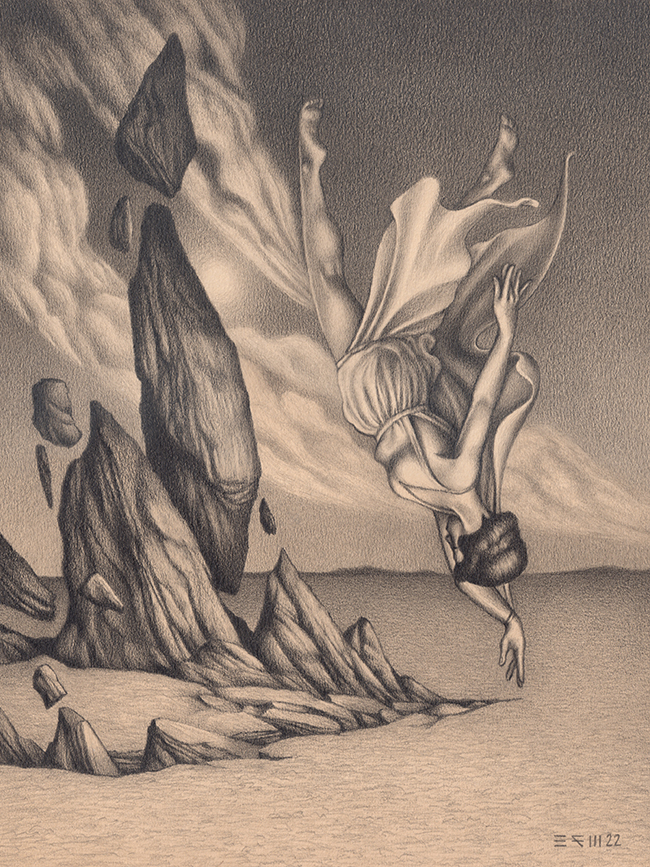
The Rare Earth drawings are inspired by the creation and movement of inanimate matter. The Earth isn't alive, but it acts like something alive: it moves, stretches, contracts, reacts to external stimuli & generates new Earth material to replace the old in a continuous cycle of creation & destruction.
Orogen
Orogeny is the process by which mountains are formed.
Graphite on toned paper
2022

Petrogenesis
Petrogenesis is the creation of volcanic rock.
Graphite and charcoal powder on toned paper
2023

Schiller
Schiller is the iridescent shimmer in some metallic rocks.
Graphite and gold paint on toned paper
2023
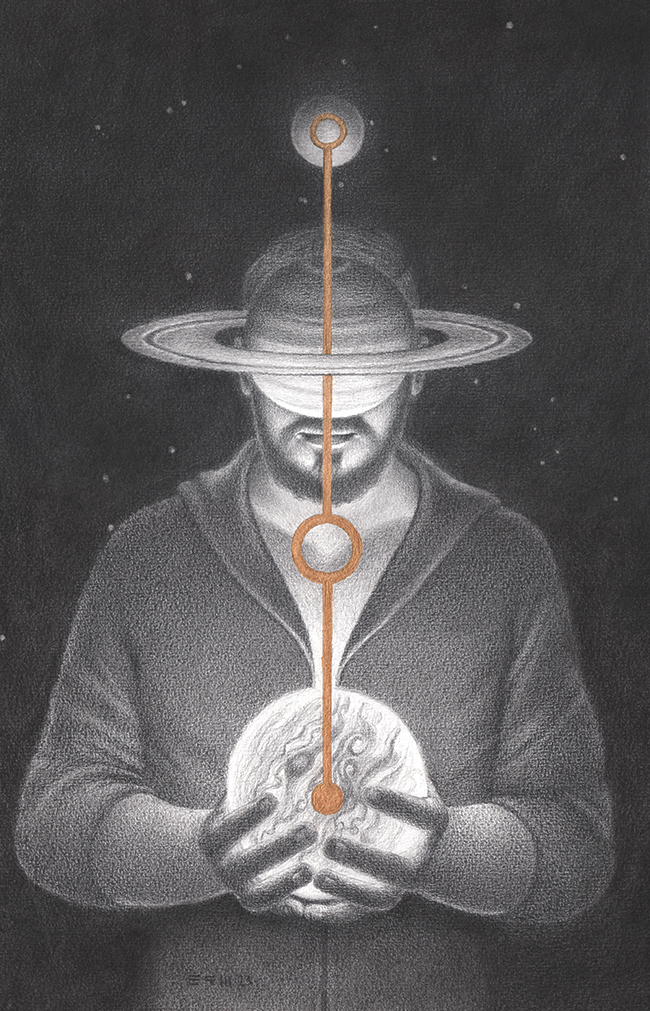
Conjunction
Graphite, charcoal powder and gold paint on paper
2023

Spring Tide
Graphite on paper
2023

All images ©2023-2024 Brian R. Williams



Left: Mathilde
Graphite and colored pencil on toned paper
2021
Right: Vala
Ink on Bristol board
2021


Left: Ælfgyva
Graphite on toned paper
2021
Right: Dreda
Ink on toned paper
2021


Left: Pascal
Graphite on toned paper
2021
Right: Marlow
Ink on Bristol board
2021


Left: Alphonse
Graphite and colored pencil on toned paper
2021
Right: Terrel
Ink on Bristol board
2021
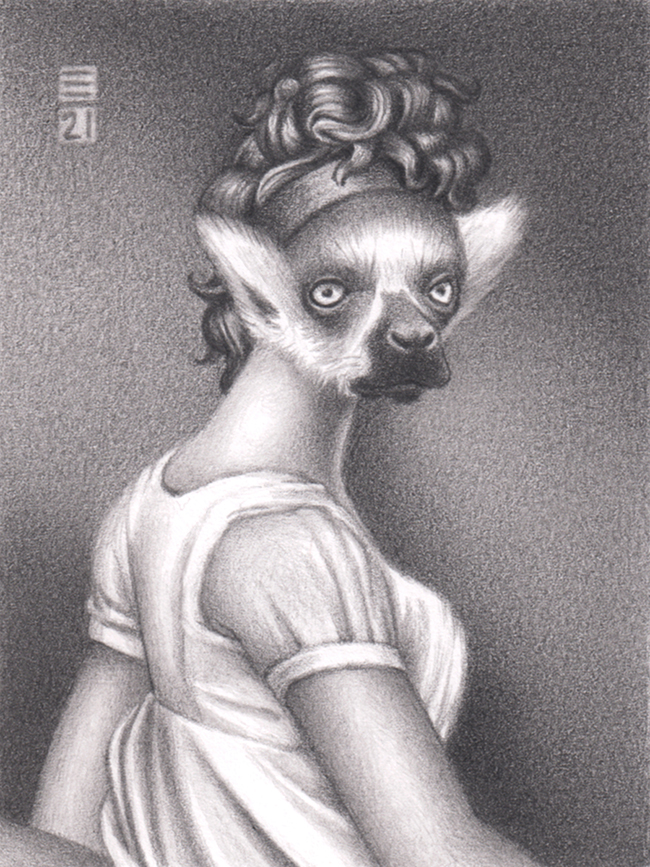

Left: Hortense
Graphite on Bristol board
2021
Right: Thistle
Ink on toned paper
2021


Left: Claude
Graphite on Bristol board
2021
Right: Hrothgar
Ink on toned paper
2021

Mars
Graphite on toned paper
2021
About the Children of Melusine Drawing Series
The thirteen graphite and ink drawings in this series are inspired by the medieval French folk tale about Melusine, a beautiful, mysterious woman who lives in the woods and is wooed by a man named Raymond. Melusine agrees to marry Raymond on the condition that he will let her return to her house in the woods once a week, and that he will never follow her there. Melusine gives birth to many children. Each child is born with an unusual physical attribute: one is covered in fur, another has a tusk growing out of his face, yet another is born with one eye higher on his head than the other. One day, Raymond breaks his promise and follows Melusine back to her house in the woods. As he spies on her, he sees her lower half transform into a sea-serpent tail. When Melusine discovers Raymond's transgression, she leaves him, never to return.
I was fascinated by the description of each of Melusine's children and their attributes presumably inherited from Melusine's mythical nature. Their fantastical features are a reminder of and connection to their heritage.
For this series of drawings, I used French Neoclassical portraits from the early 1800s as references. Graphite drawings make up the first half of the series, showing people with facial features inherited from animals, birds and insects; physical reminders that people are children of nature. These drawings envision a fictional post-Revolutionary Era utopia in which humanity reconnects with nature, as opposed to the actual historical timeline leading to the acceleration of environmental destruction and extinction.
The ink drawings that make up the second half of the series feature people with animal skulls for heads that are meant to be a visual inversion of the living creatures from the first half. The people in these drawings are eternally disconnected from themselves (they're missing their human heads) as well as from nature. The skulls that they use to replace their missing heads symbolize death, and are the only relics from the natural world that these people carry with them.

All images ©2021-2024 Brian R. Williams


Tiergeist (plural: Tiergeister) is "animal spirit" in German.
The Bryn Du Tiergeist
Graphite on toned paper
2021

The Stan Hywet Tiergeist
Graphite on toned paper
2020

All images ©2020-2024 Brian R. Williams


Alarm Call I
Graphite on toned paper
2019

Alarm Call II
Nunc aut Nunquam is Latin for "Now or Never"
Graphite on toned paper
2021

Alarm Call III
Finis Terrae is Latin for "Land's End," or literally, "End of the Earth."
Graphite on toned paper
2021

All images ©2019-2024 Brian R. Williams


The Liminal Beings drawings are my reinterpretation of mythological creatures, deities, and other human/animal hybrids that exist in a transitional realm. Click on images to enlarge.
Night-fighter
Graphite on toned paper
2021

Persephone
Graphite on toned paper framed in an antique cabinet
2018

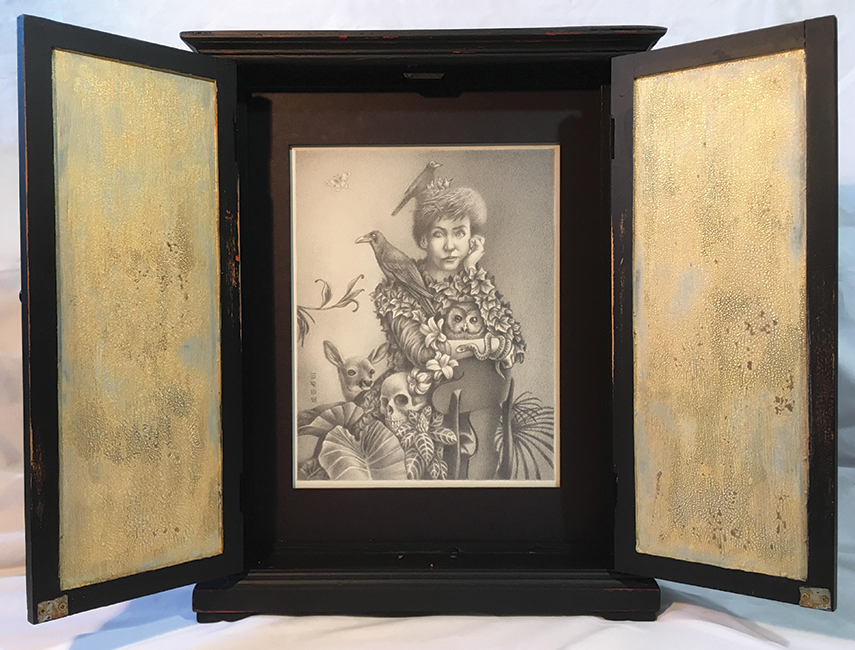
Persephone is framed in a cabinet, pictured, with the cabinet doors open and closed.

The Sphinx of the Western Reserve
Graphite on paper
2019

Gold Coast Siren
Graphite on toned paper
2019

All images ©2018-2024 Brian R. Williams

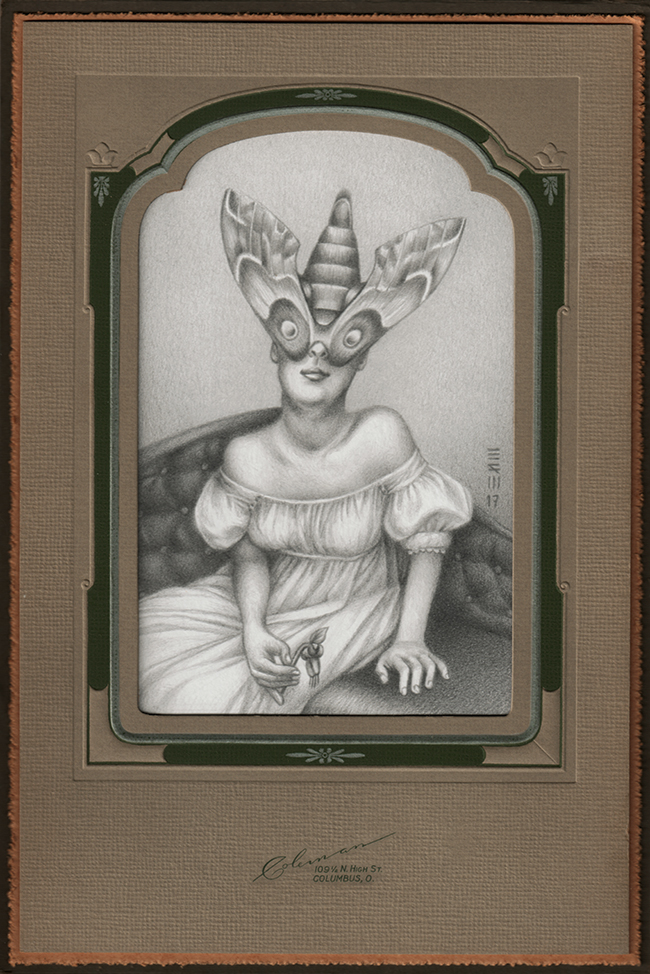

An instar is a developmental phase of insects that undergo metamorphosis, like moths. This series of drawings show movie stars from the silent and golden film eras transforming into moths. Click on images to enlarge.
Daphnis
Graphite on Bristol board in an antique photo frame
2017

Hyles valentineata
Graphite on Bristol board in an antique photo frame
2018

Actias hayakawa
Graphite and colored pencil on toned paper in an antique photo frame
2019

Hedylida lamarri
Graphite on paper in an antique photo frame
2019

All images ©2017-2024 Brian R. Williams


These are some of my favorite drawings because they combine two of my favorite subjects: history and dinosaurs. I was in the mood to draw a dinosaur, so this series started as a question I posed to myself: What if famous Americans from history had dinosaurs as companion animals? Click on images to enlarge.
Annie Oakley and Stegosaurus
Graphite on Bristol board
2016

Georgia O'Keeffe and Coelophysis
Graphite on Bristol board
2018

Frederick Douglass and Styracosaurus
Also pictured is Douglass' second wife, Helen Pitts Douglass (right, seated) and her sister Eva Pitts (standing behind the Stegosaurus).
Graphite on Bristol board
2018

All images ©2016-2024 Brian R. Williams


For my Dead Monarch Masquerade series, I portray the assassinated rulers of extinct monarchies dressed as extinct mammals for a costume party in Heaven. Click on images to enlarge.
Czar Nicholas II Dressed as a Thylacine
Graphite on Bristol board
2016

Marie Antoinette Dressed as a Western Black Rhino
Graphite on Bristol board
2017

All images ©2016-2024 Brian R. Williams


The Gilded Age series is inspired by Victorian-era photography, such as early daguerreotypes, royal portraiture and spirit photography. Click on images to enlarge.
Girls with RSVP Eyes
Graphite on Bristol board
2015
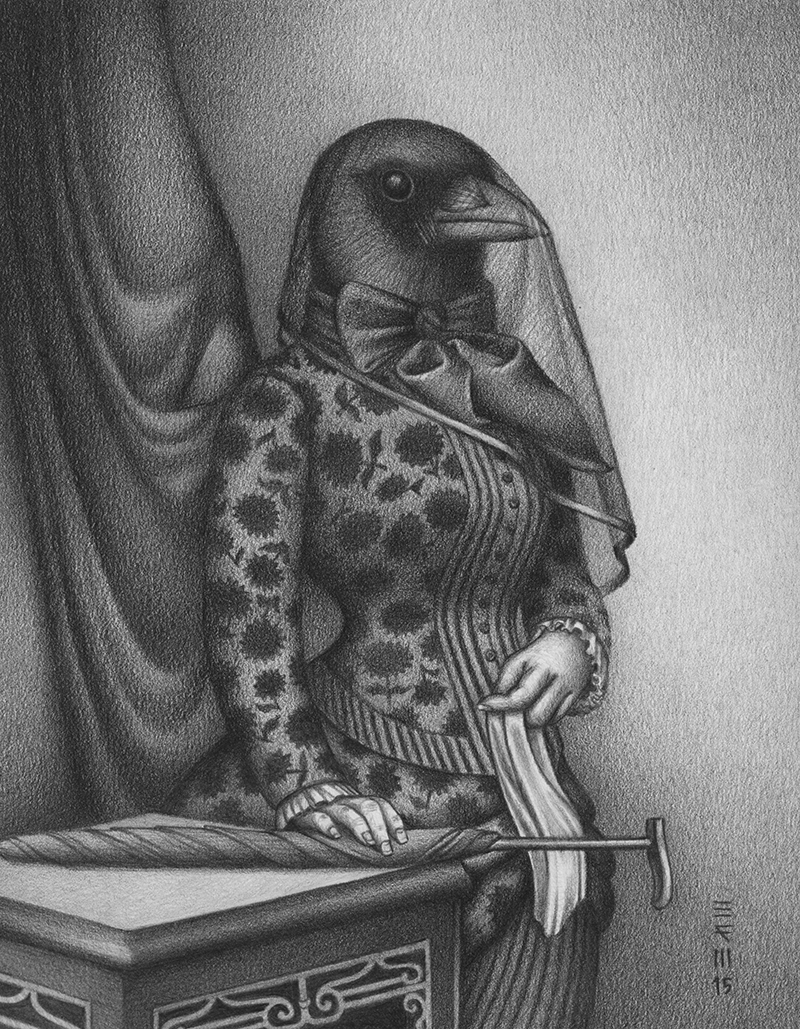
The Magpie's Widow
Graphite on Bristol board
2015
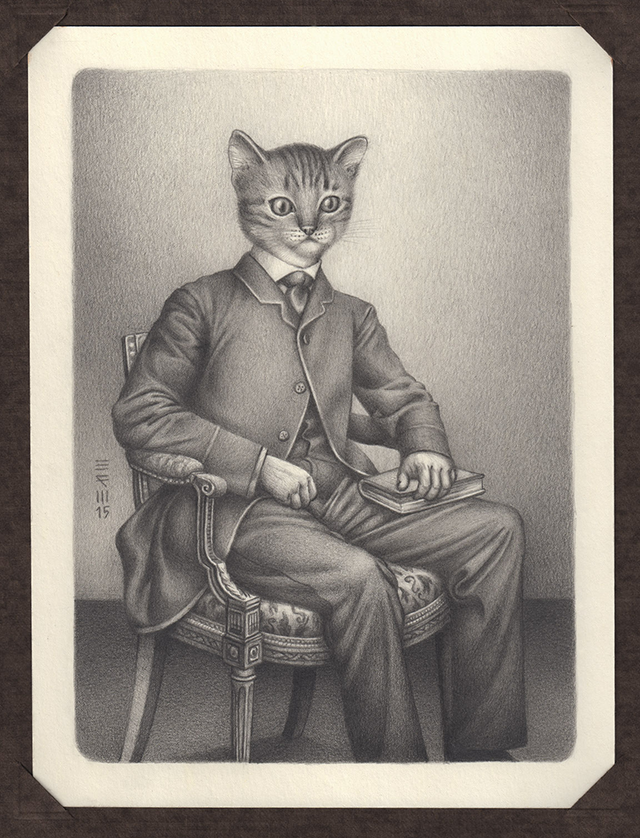
Finnigan
Graphite on Bristol board
2015


Left: Brookes of Hammockshire
Graphite on Bristol board
2014
Right: Heathcliff
Graphite on Bristol board
2015

Little Phillip
Graphite on Bristol board
2014


Left: The Hollenburg Poltergeist
Graphite on Bristol board
2014
Right: The Haunted Gramophone
Graphite on Bristol board
2014

The Metamorphosis
Graphite on Bristol board
2014

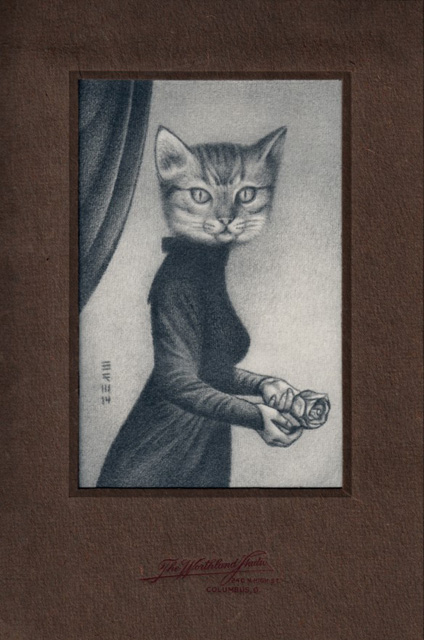
Left: Beatrix
Graphite on Bristol board
2014
Right: Beatrix in an antique photo frame

The Dowager
Graphite on Bristol board
2014

All images ©2014-2024 Brian R. Williams

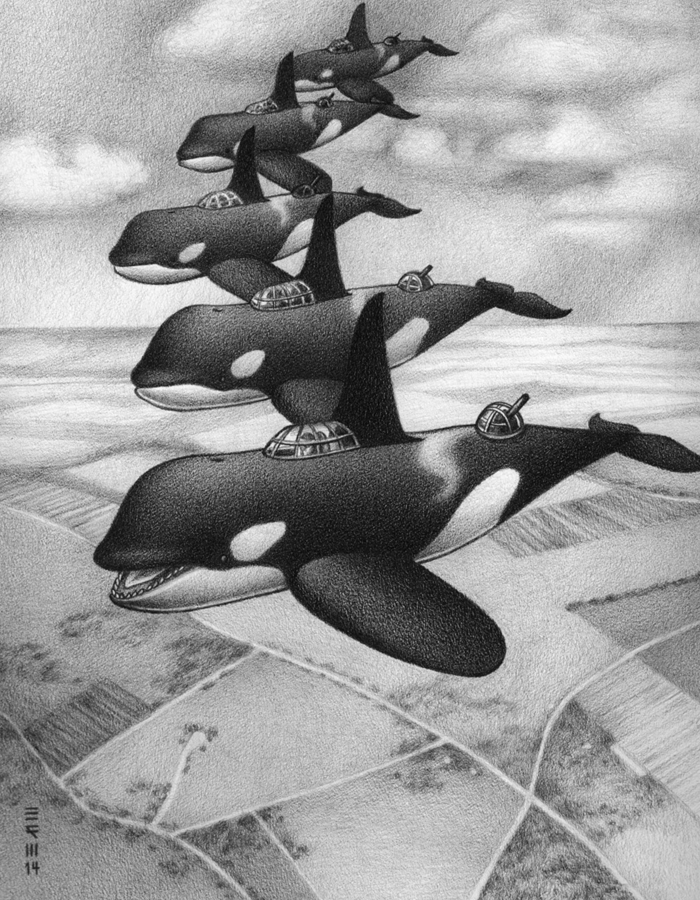
In my Whaleplanes series, I replaced fighter jets and dirigibles in old photos with whales. Click on images to enlarge.
Blackfish Squadron
Graphite on Bristol board
2014

USS Minke over New York City, 1933
Graphite on Bristol board
2014

Stenella Corsair
Graphite on Bristol board
2014

All images ©2014-2024 Brian R. Williams


For this series, I wanted to give flightless birds the power of flight using (admittedly inferior) man-made technology. Click on images to enlarge.
Penguin/Autogyro
Graphite on Bristol board
2013

Kiwi/Parachute
Graphite on Bristol board
2013

All images ©2013-2024 Brian R. Williams


Fearsome Critters of the Lumberwoods is a series based on lumberjack tales.
Lumberjacks would tell each other tall tales about fantastical creatures that lived in the vast North American wilderness in order to explain mysterious disappearances, strange noises heard at night, or to be used as pranks played on young and inexperienced members of their camp. Click on images to enlarge.
The Hidebehind
The Hidebehind has razor-sharp claws on its front paws, which it uses to disembowel unsuspecting lumberjacks who stray too far from camp. It is able to hide behind even very narrow trees, so that it can attack without warning.
Graphite on Bristol board
2013

The Luferlang
The Luferlang resembles a horse with an extra joint in each leg. Its tail is situated on the center of its back. It bites only once a year -- on July 12 -- but its bite is fatal.
Graphite on Bristol board
2013

The Teakettlers
Teakettlers are dog-like creatures with cat-like tails. They walk backwards and their call sounds like a whistling tea kettle.
Graphite on Bristol board
2013

All images ©2013-2024 Brian R. Williams

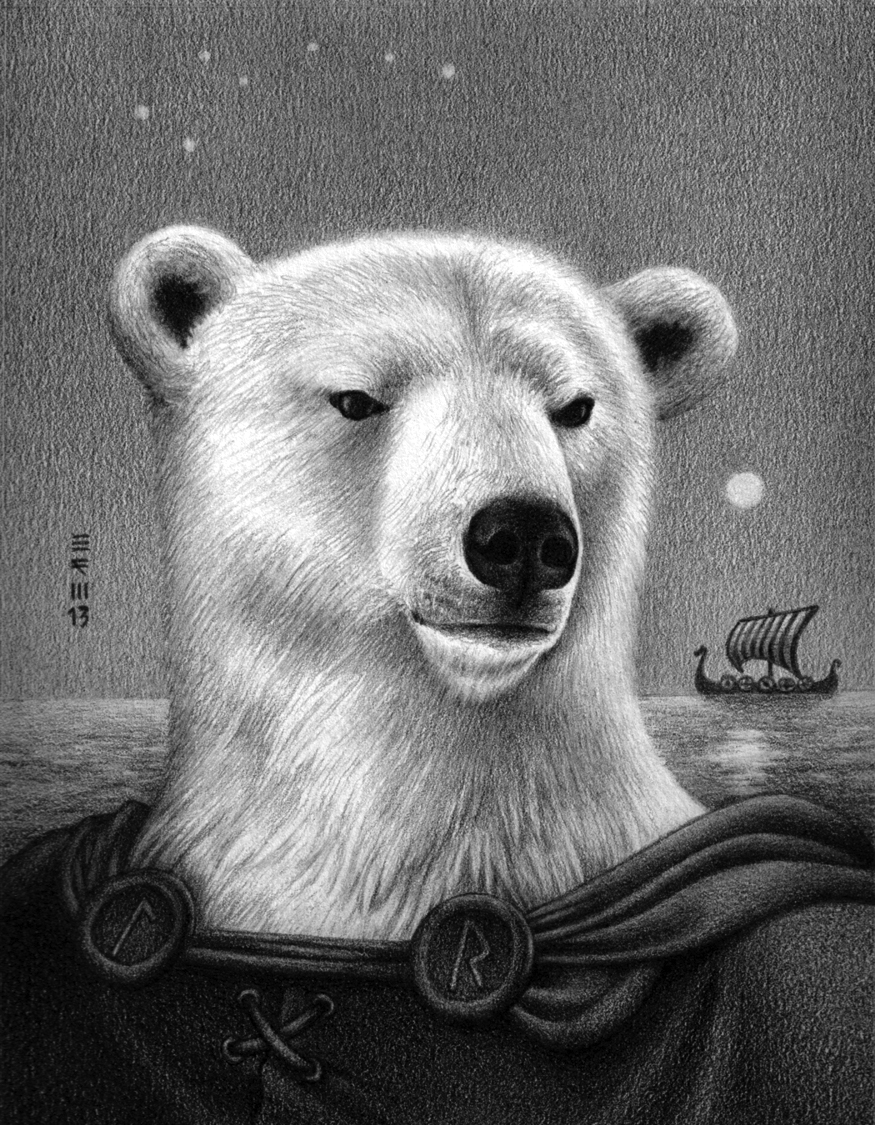
My Explorers series depicts European and American explorers as endangered animals from the region they are famous for exploring. This series was first exhibited at the Explorers Club restaurant in Columbus, Ohio. Click on images to enlarge.
Leif Ericson, c.1000
Leif Ericson was the first European to reach North America.
Graphite on Bristol board
2013

Vasco da Gama, 1498
Vasco da Gama was the first European to reach India by sea.
Graphite on Bristol board
2013

Willem Janszoon, 1606
Willem Janszoon was the first European to reach Australia.
Graphite on Bristol board
2013
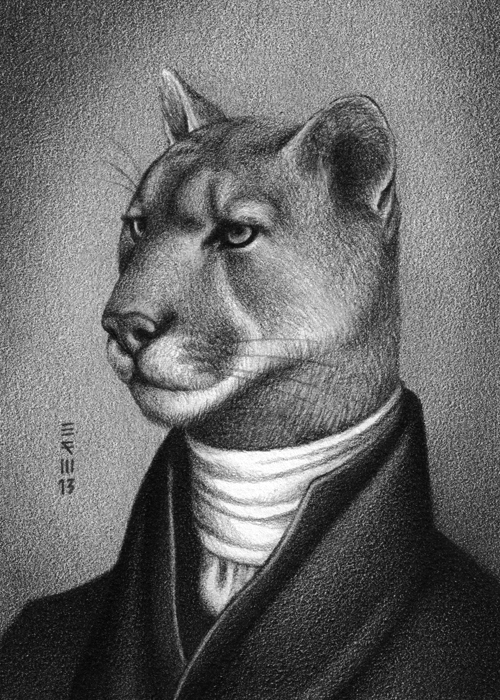

Left: Lewis and Clark
Meriwether Lewis (left) and William Clark (right) explored the North American interior in 1804.
Graphite on Bristol board
2013

Henry Morton Stanley, 1876
Henry Morton Stanley explored the Congo.
Graphite on Bristol board
2013

All images ©2013-2024 Brian R. Williams

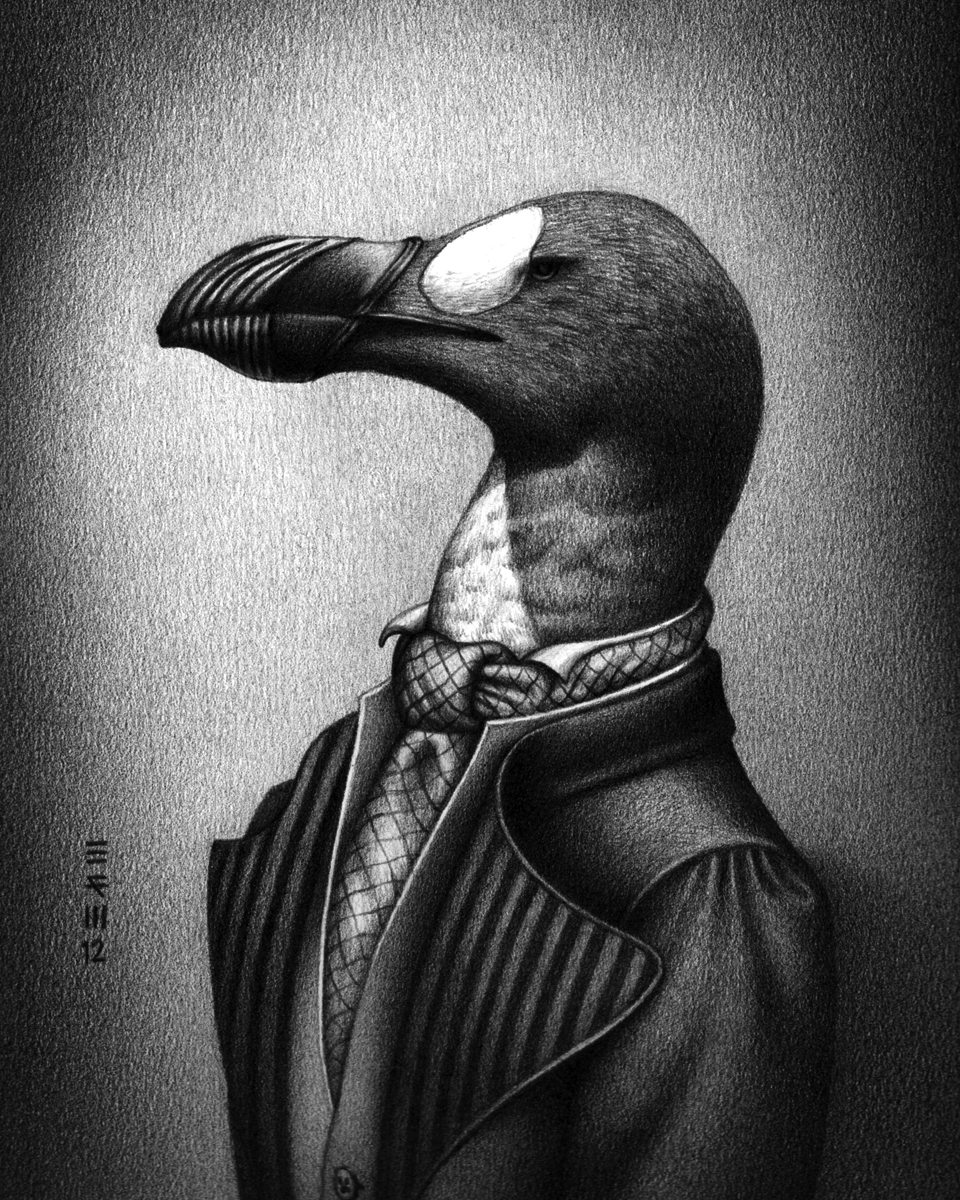
My Extinct Birds drawings show birds wearing clothing that was fashionable during the year that they went extinct.
Great Auk, 1844
Graphite on Bristol board
2012


Left: Laughing Owl, 1914
Graphite on Bristol board
2012
Right: Carolina Parakeet, 1918
Graphite on Bristol board
2012

Choiseul Pigeon, c.1929
Graphite on Bristol board
2013


Left: Hawaii 'O'o, 1934
Graphite on Bristol board
2012
Right: Imperial Woodpecker, c.1956
Graphite on Bristol board
2012


Left: Molokai Creeper, c.1963
Graphite on Bristol board
2012
Right: Atitlán Grebe, 1989
Graphite on Bristol board
2012

All images ©2012-2024 Brian R. Williams



The Fowl Fraternity is a series of drawings of birds whose names could also be used to describe people. Click on images to enlarge.
Left: The Booby, graphite on Bristol board, 2007
Right: The Cardinal, graphite on Bristol board, 2008

The Chick
Graphite on Bristol board
2008


Left: The Cock
Graphite on Bristol board
2009
Right: The Cuckoo
Graphite on Bristol board
2007

The Dodo
Graphite on Bristol board
2008


Left: The Drake
Graphite on Bristol board
2009
Right: The Hawk
Graphite on Bristol board
2008

The Loon
Graphite on Bristol board
2007

The Owl
Graphite on Bristol board
2008


Left: The Snipe
Graphite on Bristol board
2007
Right: The Swift
Graphite on Bristol board
2007

All images ©2007-2024 Brian R. Williams


Sixth Extinction Sonata
Graphite on paper
2021

Relic
Graphite on paper
2021

The Anchorite
Graphite on paper
2021

Anima Nova (A New Life)
Graphite on toned paper
2019

Somnambulocetus (Sleepwalking Whale)
Graphite and colored pencil on toned paper
2019

The Eclipse
Graphite on toned paper
2018
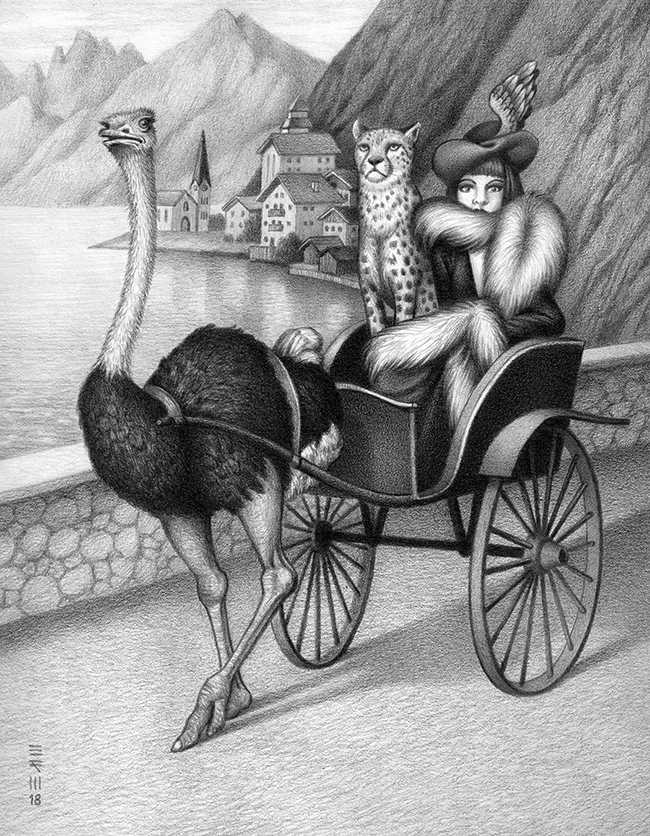
The Marquise de Valfierno
Graphite on Bristol board
2018

Emperor Jasperian
Graphite on Bristol board
2018

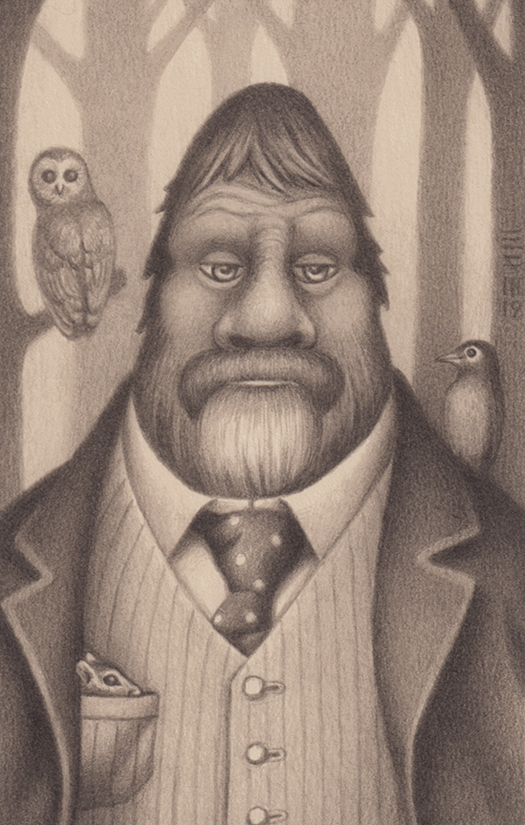
Left: First Classquatch I
Graphite on toned paper
2016
Right: First Classquatch II
Graphite on toned paper
2019

Hinter Schwarzen Vogelmasken
(Behind Black Bird Masks)
Graphite on toned paper
2016

Femmes Fatales
Graphite on Bristol board
2016


Left: Finch and Crane
Colored pencil and graphite on toned paper
2014
Right: Love Birds
Graphite on Bristol board
2013
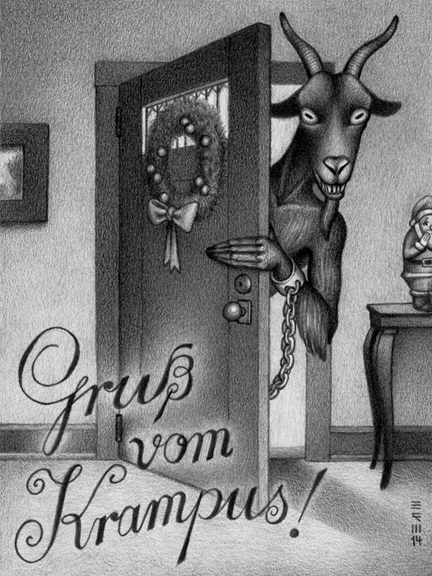

Left: Gruss vom Krampus! (Greetings from Krampus!)
Graphite on Bristol board
2014
Right: Dracula
Graphite on Bristol board
2013

Doktor Schnabel von New Albany
Graphite on Bristol board
2008

All images ©2008-2024 Brian R. Williams
